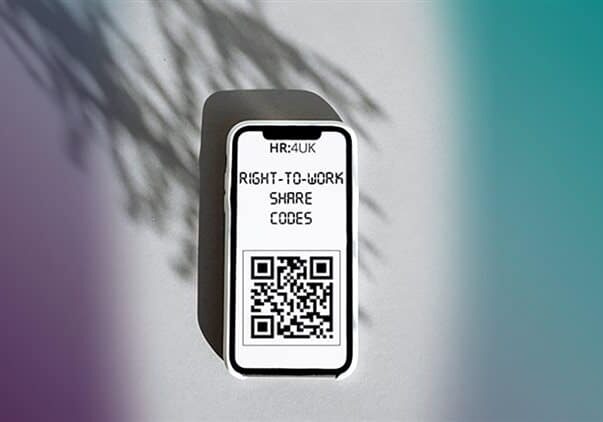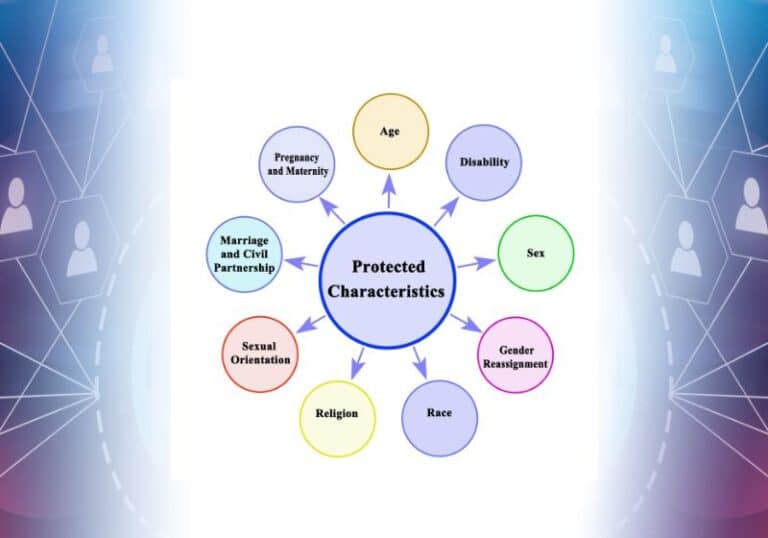Share Codes and Right to Work: What it Means for Employers

As an employer, it is no secret that you are responsible for ensuring that your employees have a legal right to work in the country. The punishments for not doing so are harsh indeed: up to 5 years in jail and a potentially unlimited fine. As such, it’s imperative that you’re familiar with the necessary requirements to legally employ people in the United Kingdom.
To assist in this, companies can make use of a feature introduced in July 2019 as part of post-Brexit law: the Right to Work Share Code. But what is a share code, and how do employers use them? Read on to find out.
What is a Right to Work Share Code?
To begin, it’s essential to accurately define what Right to Work Share Codes are. Put simply, a Right to Work Share Code is a time-limited code that is used to securely access a potential employee’s right to work details. The details include their immigration status and whether they can legally work in the UK. These codes are used to improve and streamline the process of checking employees’ ability to work in the UK, allowing for a more efficient and streamlined onboarding process, saving everyone involved valuable time and resources.
The codes themselves are fully online, and consist of a 9-digit alpha-numerical code provided by the UK government. Each code is totally unique, and as such, pertains to a particular individual only. Moreover, they not only show businesses if said individual has the entitlement to work in the UK, but also detail what particular sector and length of time they are able to work for.
Crucially, since the right to work legislation has been put into action, employers can no longer accept EU, EEA, Swiss passports or ID cards in order to prove the applicant’s immigration status. This means that employers in the UK will need to complete a right-to-work check for employees from Europe, excluding Ireland. As such, it’s necessary for both employers and managers to understand this process and how to make best use of it.
How Do You Use a Right to Work Share Code?
The share code from the government aims to expedite the verification process of foreign employees’ employment rights. Specifically, it serves as a tool to verify a person’s ‘right to work’ for employers in the UK.
By using the applicant’s share code and date of birth, you can confirm:
- The specific roles the candidate is permitted to perform.
- The duration for which the candidate can legally work in the UK.
- Their eligibility to access public services, such as the NHS.
- The candidate’s entitlements regarding UK benefits.
- Their legal right to establish a bank account or apply for credit in the UK.
It’s key to note that the share code from the home office is only valid for a span of 30 days in order to deter fraudulent activities. After this period, a new code will need to be generated by the candidates.
How do I Generate a Share Code?
The candidate (not the employer) must gather one or more of the following:
- A biometric residence permit (BRP, often a visa number)
- Biometric residence card number
- Passport
- National Identity Card
Then log on to the government website using the ID that they used for their initial visa application. Thereafter, a 6-digit code will be sent to their mobile or email address. Once logged in, they will be able to view their status and generate a share code once they’ve specified their need for the code, e.g. for work.
Once this has been done, a 9-digit code will appear on-screen which can then be sent to employers alongside their date of birth. Now, all that is left will be the right-to-work checks.
How do I Complete Employer Right to Work Checks?
It’s crucial to conduct a comprehensive right-to-work examination prior to hiring, as this stands as an employer’s sole defence should an employee be found working unlawfully.
As mentioned above, the employer can initially enter the share code and date of birth of the applicants into the official UK government website to view their immigration status. To complete a right-to-work check, you should undertake the following steps:
- Obtain original documents verifying the applicants’ identity, such as a passport.
- Conduct a UK immigration ID check by verifying the authenticity of each document and ensuring the potential employee is the document’s legitimate holder.
- Copy the documents in a non-modifiable manner and note the date of the check.
- Understand the legal duration of your defence, which depends on the type of document used to confirm their identity.
Since April 2022, the right-to-work checks can also be conducted using Identity Document Validation Technology (IDVT). A list of approved right-to-work check providers will be maintained by the government, enabling candidates to digitally upload their personal documents, eliminating the need for physical document presentation.
What are the Benefits of a Right to Work Share Code?
Right to Work Share Codes have become increasingly popular in recent years, mainly due to the global pandemic. Due to fewer in-person interactions, remote working, and social distancing measures, employers have had to adjust their hiring and onboarding process to ensure social distancing while still complying with necessary employee checks. Right to Work Share Codes have helped companies to adapt to these changes while still ensuring that all legal requirements are met.
Another key benefit of utilising Right to Work Share Codes is the ability to save money and time. Traditional checks require several documents to be assessed, adding to the workload of staff and managers. With Right to Work Share Codes, as long as the code is generated correctly, the complexity of the verification is removed. All the necessary information is contained in one code which is entered into the online checking system. This reduces the need for administrative work, saving time and money. Furthermore, the code is valid for 30 days from the date of issuance, meaning that repeat electronic checks do not need to be carried out for a month.
It’s important to note that while Right to Work Share Codes can significantly benefit your company, they do have some limitations. Firstly, they cannot be used for people that don’t have a current UK immigration status, including EEA nationals, British or Irish citizens. Similarly, those with Indefinite Leave to Remain (ILR) before 2013 and either refugee status or lack of a biometric residence permit do not need a share code.
Additionally, if the code is not generated correctly, it will not be valid. It’s critical to always double-check the details entered while generating the code to ensure that it’s accurate and valid.
Key Features:
- Verification is streamlined
- All necessary information is included, no need for extra paperwork
- 30-day validity to ensure security
- Accessed online at any time
- Reduced admin, saving time and money
Conclusion
As an employer, it’s necessary to understand the importance of complying with all legal requirements when hiring and onboarding employees. Utilising Right to Work Share Codes is an excellent way to streamline the onboarding process and ensure that all information is secure and compliant. By reducing time and money spent on administration and checks, companies can allocate these resources to other important areas of their business. Keep in mind the limitations of using Right to Work Share Codes and always ensure that the code is generated correctly to ensure compliance and validity.
For more information, or for any questions or queries regarding this handy new mechanism, why not get in touch with our award-winning team of dedicated, friendly, professional advisors today on 01455 444 222 or email [email protected].
1. UK Government. (2023). Penalties for Employing Illegal Workers. https://www.gov.uk/penalties-for-employing-illegal-workers
James Dawson
James is our resident wordsmith and has many years of experience in writing about a huge variety of topics from HR to Occupational Health and beyond. He has been published in numerous magazines and news outlets, and especially enjoys researching and analysing the current trends in the modern business world.




